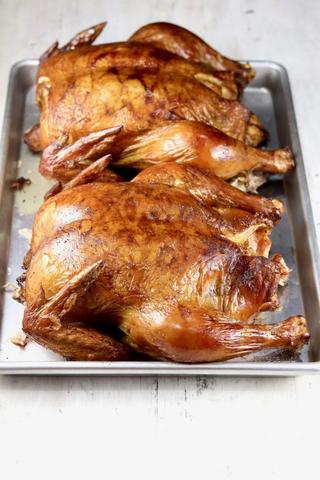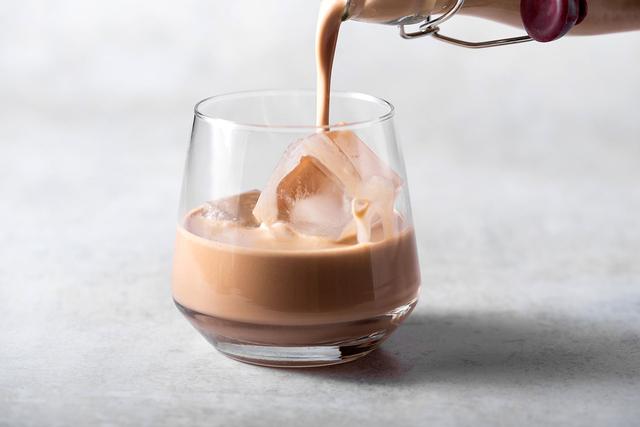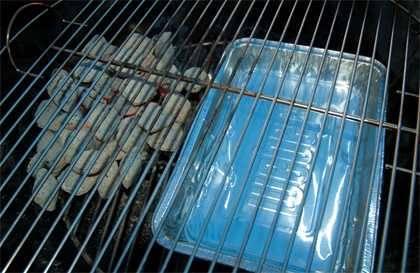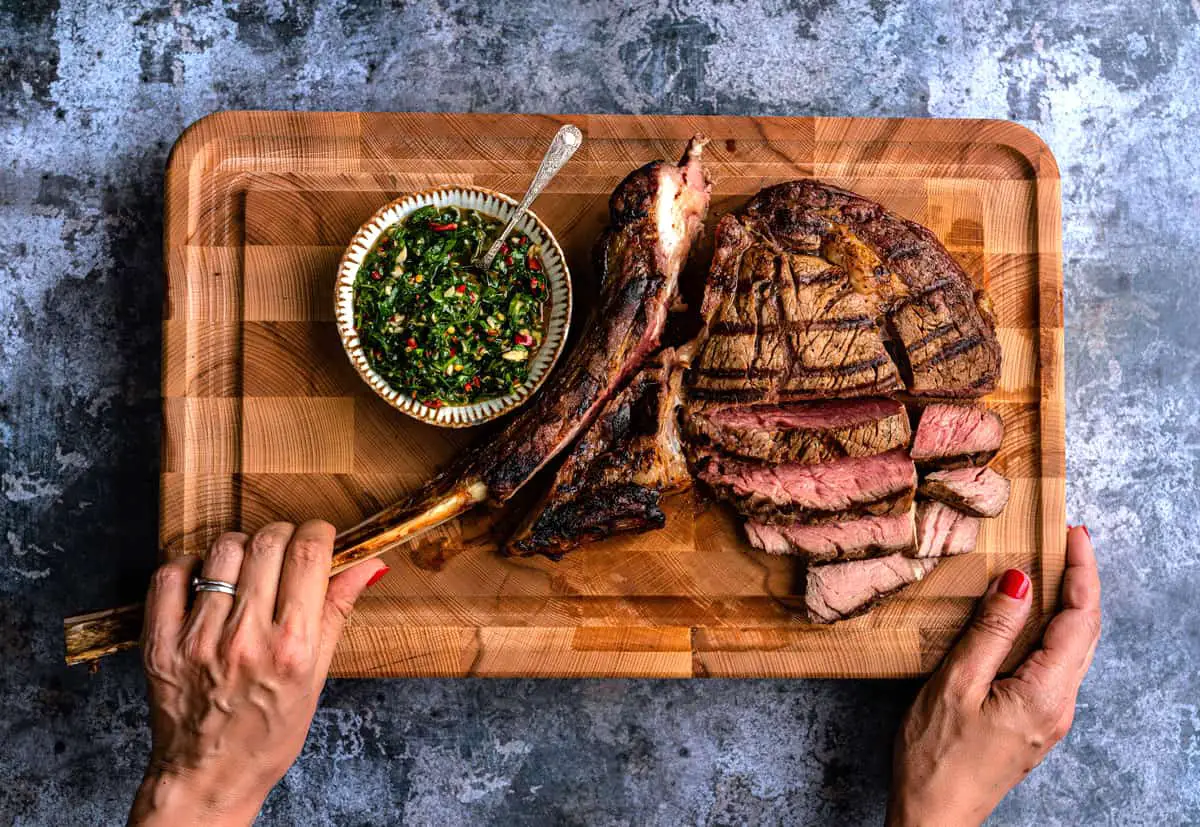
“Unlocking the Art of Perfection: Discover the Optimal Steak Resting Time!”
How Long to Let Steak Rest After Cooking: Is it a Myth?
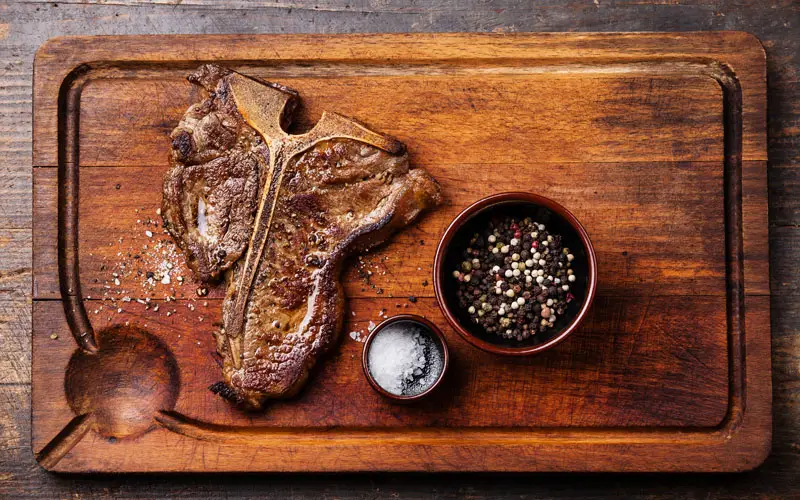
The question of how long to let steak rest after cooking has been the subject of much debate. While some people believe that resting steak is an important step in the cooking process, others argue that it is unnecessary. The rest time of steak depends on factors such as size, cut, and personal taste preferences.
Those who advocate for resting steak often recommend a rest time of 5 minutes per inch of thickness. However, research has shown that the amount of juice loss in a non-rested steak is essentially insignificant and not perceivable. This suggests that resting steak may not be necessary.
It’s important to note that resting large cuts of meat like beef brisket or pork butt may have different considerations. Brisket and ribeye steak come from different primals and have different compositions. Brisket has more rendered fat, connective tissues, and surface area for dry rub/salt to penetrate. Resting brisket allows it to reabsorb and redistribute its juices. However, this does not necessarily apply to all cuts of meat.
Why is Steak (Meat in General) Rested
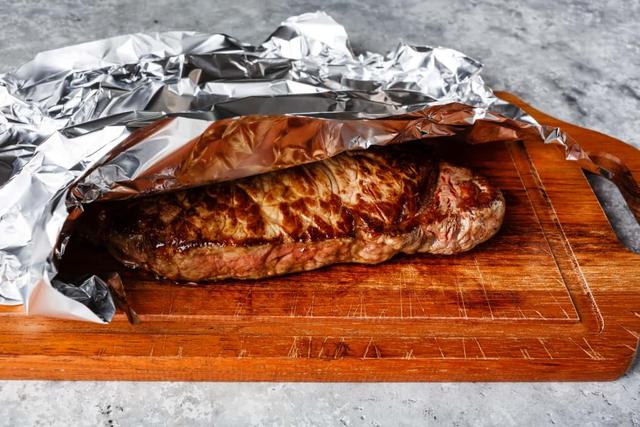
Steak and meat in general are rested after cooking for several reasons. One of the main reasons is to allow the meat to reabsorb and redistribute its juices. When meat is cooked, the proteins in the muscle fibers break down and coagulate, causing moisture to be squeezed out. Resting allows the meat to retain more of its natural juices, resulting in a juicier and more flavorful steak.
Additionally, resting steak helps to tenderize the meat. As the temperature of the meat increases during cooking, connective tissues begin to break down. By allowing the steak to rest after cooking, these connective tissues continue to break down and become more tender. This results in a more enjoyable texture when eating the steak.
Furthermore, resting steak gives it time to cool slightly before serving. This allows the internal temperature of the steak to even out, preventing overcooking and ensuring that it reaches the desired level of doneness. Resting also allows any residual heat on the surface of the steak to dissipate, which can help prevent further cooking and maintain a delicious crust on the outside of the meat.
Anatomy and Composition of Muscle Tissue
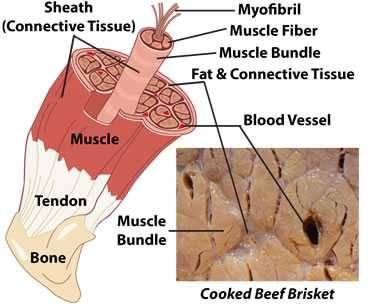
Muscle tissues are made up of bundles of cells known as muscle fibers, which are held together by connective tissue. These muscle fibers are grouped into muscle bundles composed of myofibrils, which consist of proteins such as actin and myosin. Collagen fibers and an elastic connective tissue called “silver-skin” or epimysium surround the fiber bundles, separating different muscle groups.
Collagen, the most abundant protein in mammals, provides support and strength to the muscles. When collagen fibrils are heated, they shrink, resulting in fluid loss. However, collagen also breaks down at certain temperatures. Muscles contain a significant amount of moisture (water), protein, and fat. Most of the water is contained between the filaments that make up the muscle fibers.
The juiciness of meat is determined by the amount of free moisture present. As meat is cooked and its temperature increases, proteins denature and unwind while muscle fibers shrink and squeeze out moisture. The denaturing process involves breaking bonds and coagulating proteins. At higher temperatures, connective tissues break down further, causing more moisture loss. Resting steak allows it to reabsorb some juices but can also lead to carry-over cooking and degradation of the crust.
Understanding the Term Juiciness
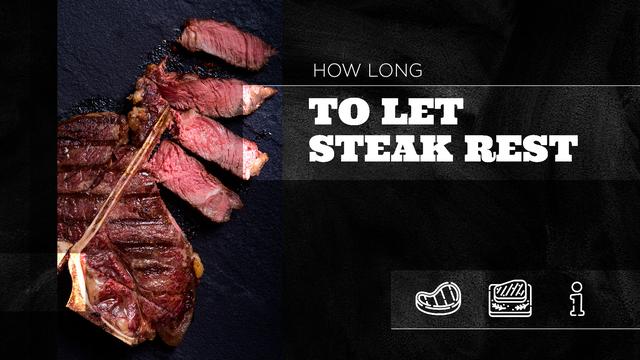
Juiciness refers to the amount of meat juice that is released when you bite into a piece of meat. It is influenced by the moisture content in the muscle fibers. As meat is cooked, the temperature increases, causing protein molecules to unwind and muscle fibers to shrink. This process, known as denaturing, results in the loss of moisture from the meat. The higher the temperature and longer the cooking time, the more water is pushed out of the meat, making it drier.
However, it’s important to note that juiciness is not solely dependent on moisture content. Other factors such as fat content and connective tissues also contribute to the perception of juiciness. For example, brisket contains more rendered fat and connective tissues than a cut of ribeye steak. Brisket gets its juiciness from fat and connective tissue gelatin, while steak gets its juiciness from moisture content.
Resting steak after cooking is often recommended to allow the meat to “reabsorb” and “redistribute” its juices. While some argue that resting is unnecessary as there is minimal juice loss compared to a non-rested steak, others believe that it helps improve tenderness and flavor. The decision to rest steak ultimately depends on personal preference.
How to Rest Steak

Resting steak is a simple process that involves leaving it on a plate to stand. After cooking the steak, remove it from the heat source and place it on a clean plate. Avoid wrapping the steak in aluminum foil, as this can trap steam and cause the crust to become soggy. Instead, let the steak rest uncovered for about 5 minutes per inch of thickness.
During the resting period, the internal temperature of the steak will continue to rise due to carry-over cooking. This is why it’s important to take into account your desired level of doneness before resting the steak. For example, if you prefer medium-rare steak, you may want to remove it from heat at a slightly lower temperature to account for carry-over cooking.
While resting, avoid cutting into or poking the steak, as this can cause juices to escape and result in a drier piece of meat. Once the resting time is complete, you can serve the steak and enjoy its delicious flavors and tenderness.
Final Thoughts
The debate over whether or not to rest steak after cooking is a contentious one. While some argue that resting allows the meat to reabsorb and redistribute its juices, others believe that the amount of juice loss is insignificant and that resting is unnecessary. The truth likely lies somewhere in between.
Resting steak can be beneficial for larger cuts of meat, such as beef brisket or pork butt, which have more rendered fat and connective tissues. However, for a standard ribeye steak, resting may not make a noticeable difference in juiciness. It’s important to consider the size, cut, and personal taste preferences when determining how long to rest your steak.
Additionally, how you choose to rest your steak can impact its doneness and crust. Wrapping the steak in aluminum foil can cause moisture accumulation and lead to a mushy crust. It’s worth considering these factors when deciding whether or not to rest your steak.
In conclusion, allowing steak to rest after cooking is crucial for optimal flavor and tenderness. While there is no hard and fast rule, a general guideline of 5-10 minutes should suffice for most cuts. However, thicker steaks may require up to 15 minutes. Resting allows the juices to redistribute throughout the meat, resulting in a more succulent and enjoyable dining experience.
Learn More About Grilling
If you want to learn more about grilling, check out these other helpful resources!

